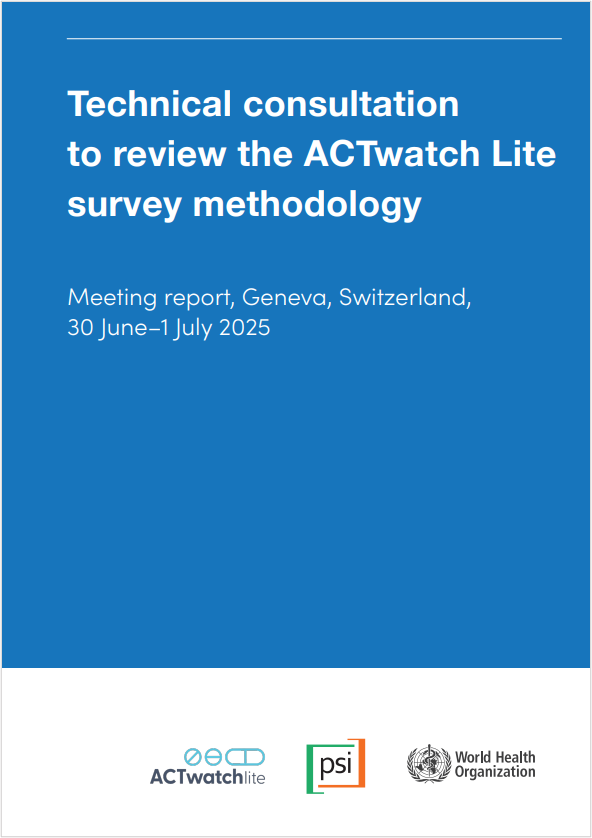8th Virtual International Conference on Plasmodium vivax Research (ICPvR) – 2022: Day 3
Thursday, 7th April 2022
Published: 09/04/2022
This report is brought to you by the MESA Correspondents Melina Florez-Cuadros, Varun Gorki, Neha Sylvia Walter, and Duru Vincent Chiagozie. Senior editorial support has been facilitated by the Organizers and Chairs of the sessions.
THEMES: THEMES: Basic Science | Epidemiology | Health Systems | P. vivax
MESA Correspondents bring you cutting-edge coverage from the virtual 8th International Conference on Plasmodium vivax Research (ICPvR 2022)
Day 3: Thursday, 7th April 2022
Keynote Presentation
Moses Laman (Papua New Guinea Institute of Medical Research, Papua New Guinea) initiated his talk by highlighting the high Plasmodium vivax (P. vivax) malaria burden in PNG wherein relapses occur in 80% of the cases. He emphasized the challenges in addressing the P. vivax malaria burden in PNG which includes lack of G6PD testing, drug supply challenges, absence of a formal pharmacovigilance system for the use of primaquine, shortage of health workforce as well as the lack of political support. He then introduced the National Malaria Control Program’s (NMCP’s) strategic plan (2021-2025) that aims to achieve routine G6PD testing, review malaria treatment guidelines, ensure the safety of P. vivax radical cure and approval for SD biosensor in PNG. He further stressed the point of care of qualitative and quantitative G6PD testing before primaquine administration, improved diagnostics and prescription of WHO recommended drug dose, identification and management of the adverse effects and improved surveillance. He concluded by showcasing the country’s readiness to develop a roadmap of tools and strategies to eliminate P. vivax malaria and the significance of research in the endemic areas.
Session 5: Treatment of vivax malaria
Rob Commons (Menzies School of Health Research, Australia) presented a systematic review and individual patient data meta-analysis on the optimal primaquine (PQ) dose. He pointed out that primaquine has both pros and cons viz, better efficacy, hemolysis and gastrointestinal (GI) symptoms. WHO recommends a dose between 3.5 to 7.0 mg/kg over 14 days. After a screening of potential studies, results from 6879 included patients showed that the lower dose of 3.5 mg/kg of primaquine is suboptima compared to 7.0 mg/kg which reduced the risk of P. vivax recurrence by 55%. However, giving a high dose daily may lead to more GI symptoms like vomiting, diarrhoea, and anorexia. Commons finished by highlighting the need to evaluate the hematological benefits of the higher dose to prevent relapses which can lead to recurrent parasite induced haemolysis.
Sze-Ann Woon (University of Western Australia, Australia) and her research group performed an open label, randomized controlled trial in children 6 months to 12 years with uncomplicated malaria and normal G6PD level to evaluate the efficacy and safety of 1 mg/kg twice daily primaquine regimen for 3.5 days. The dose of primaquine exhibited no difference in parasitaemia recurrence in both early (PQ on day 3) and delayed (PQ after 21 days) groups by day 42, though GI symptoms were more common in the early group. She concluded that primaquine treatment must be administered for radical cure in uncomplicated P. vivax malaria patients thereby contributing to malaria control.
Marcus Lacerda (Doctor Heitor Vieira Dourado Tropical Medicine Foundation, Brazil) presented the results of the first phase of an operational feasibility study with tafenoquine or primaquine (TRuST). A non-interventional, observational study was carried out to investigate if P. vivax patients were treated with tafenoquine or primaquine in accordance with the appropriate level of glucose-6-phosphate-dehydrogenase (G6PD) activity. Data collected from 09/09/21 to 18/10/21 was analyzed from health facilities in Manaus and Porto Velho, Brazil. They observed that appropriate treatment of patients according to G6PD activity was better with tafenoquine than primaquine. No cases of acute hemolytic anemia (AHA) were noted following tafenoquine treatment, unlike primaquine treatment which resulted in 5 cases with some requiring blood transfusions.
Shahin Tajeri (Sorbonne University, France) demonstrated and accentuated the problem that primaquine and tafenoquine are the only chemotherapeutics available for treating Plasmodium vivax hypnozoites, which are dormant liver stage and favour the parasite for epidemiological persistence. Due to the risk of fatal haemolysis in G6PD deficient patients, new hypnozoitocidal chemicals are urgently required. He demonstrated infusions prepared from Artemisia annua (high artemisinin content) and Artemisia afra (low artemisinin content) were effective in in vitro studies at non-toxic doses. Confocal microscopic examination after exposure to either infusion showed disruption of the parasites’ apicoplast suggesting that a non-artemisinin component in the infusions might be responsible for parasite killing.
Session 6: New advances in diagnostics and surveillance (parasite and G6PD) from discovery to implementation
Rhea Longley (Walter and Eliza Hall Institute of Medical Research – WEHI, Australia) initiated her talk by highlighting the complex biology of P. vivax which makes surveillance and elimination challenges. In contrast to other malaria species, P. vivax forms dormant liver stages, that cannot be diagnosed to date but provide a silent reservoir that complicates P. vivax malaria elimination and control. Longley and her team identified a set of 8 serological markers that showed very good performance in predicting a P. vivax infection within the past 9 months. Thereby identified individuals have a very high likelihood of carrying dormant liver stages and can be targeted for treatment. The authors conclude that these antibodies can be used for surveillance to identify hidden P. vivax malaria reservoirs.
Benishar Kombut (Papua New Guinea Institute of Medical Research, Papua New Guinea) started the presentation by giving a brief background of Plasmodium vivax infection in pregnancy in Papua New Guinea (PNG) and its contributory adverse effects and limitations of current diagnostic tools. Kombut noted that P. vivax infections are often sub-microscopic and asymptomatic, identification requires novel ultra-sensitive bedside diagnostics. The aim of this study was to assess the diagnostic performance of the Loop-mediated Isothermal Amplification (LAMP) for detecting P. vivax infections during pregnancy in PNG. Using a cross-sectional survey, the study was the first to assess the Pv LAMP performance in the field and was able to establish evidence of a high burden of undetected P. vivax infections during the first and second trimesters of pregnancy.The evaluated Pv LAMP was found to be a promising field deployable tool for detecting sub-clinical P. vivax infections in pregnant women with a sensitivity of 83% and specificity of 93%.
Benedikt Ley (Menzies School of Health Research, Australia) highlighted that the main risk factor for 8-aminoquinoline (8AQ) induced hemolysis is G6PD deficiency. Despite 8AQs being in use for over 60 years and G6PD deficiency being one of the most common enzymopathies worldwide, very few cases of 8AQ induced hemolysis have been reported. To address this contradiction he assessed the G6PD activity of 335 malaria patients when parasitemic and again more than six months later when all patients were aparasitemic. He found that G6PD activity increased in the course of a malaria episode at a clinically relevant level. Dr Ley hypothesizes that this change is due to parasite induced hemolysis. A prospective case control study is required to confirm these findings.
Germana Bancone (Mahidol University, Thailand) assessed the usability of a handheld quantitative G6PD diagnostic (STANDARDTM, SDBiosensor, ROK) that was integrated into a malaria elimination program in the north of Thailand and neighboring Myanmar. In 2020 and 2021, G6PD survey using G6PD biosensor was conducted in around 23 villages and more than 5000 residents participated in this survey. Before this survey, health workers were trained for conducting quantitative tests using G6PD biosensors and counselling sessions were conducted for village population on G6PD deficiency and primaquine toxicity. Results from their study showed G6PD deficiency prevalence of 15.4% thus concluding that the diagnostic test was easy to use, well-accepted, and could reliably identify both intermediate and deficient phenotypes if used with community engagement activities.
Rapid Fire Presentation – Treatment of vivax malaria
#300 Mohammad Sharif Hossain (International Centre for Diarrhoeal Disease Research, Bangladesh) conducted a clinical evaluation of primaquine (PQ) adherence in 33 P. vivax infected patients. At length, he endorsed minimizing the treatment delay and the use of a short course of primaquine for P. vivax malaria found through focus group discussions (FGD) organized during the study.
#301 Vishnu Teja Nallapati (Kasturba Medical College, India) presented a systematic review on chloroquine resistance for P. vivax which is found to be relatively low in India even though it is increasing. In the 17 studies included in the systematic review, chloroquine resistance was identified in in vivo and in vitro studies, even though in a very low percentage.
#302 Bob Taylor (Mahidol Oxford Tropical Medicine Research Unit – MORU, Thailand) elaborated on how to overcome the challenges of primaquine viz, no adapted paediatric dosage, bitterness for paediatric use, low acceptability and poor compliance. New quality assured formulations with a better test are being studied in two field clinical trials in Ethiopia and Burkina Faso.
#303 John Huber (Washington University in St. Louis School of Medicine, United States) explored different sources of site-specific biases with an individial-based model to identify recurrent infections, either due to relapse or reinfection. He concluded that transmission intensity causes downward bias which can be mitigated with vector control.
#304 In the qualitative study presented Annisa Rahmalia (Yayasan Pengembangan Kesehatan dan Masyarakat, Indonesia) observed substantial obstacles faced by community health workers (CHWs). Eventually, in ethnically diverse locations, recognising social connections (public and private) are the critical aspect of developing an effective community-based malaria strategy.
#305 Benjamin Bob (Akwa Ibom State Government of Nigeria, Nigeria) presented the conclusion of a random sample cluster survey (2015-2020) conducted to monitor the healthcare facilities viz, proper access to prompt diagnosis, care, treatment of malaria. He suggested that a community delivery mechanism is a cornerstone to achieving the National Malaria Elimination Programme (NMEP) policy goals.
#306 Leticia Ferreira (University of Campinas, Brazil) paid attention to the emergence and the spread of drug-resistant parasite strains of Plasmodium against artemisinin-based combination therapies (ACTs). Therefore, with the aid of in silico i.e., QSAR, in vitro and in vivo approaches, compounds were designed and tested. Among them, LDT-623 exhibited better EC50 and was found active against sexual stages with good synergism with methylene blue and might be considered as a HIT molecule.
#307 Brice Campo (Medicines for Malaria Venture – MMV, Geneva) has developed new screening assays to assess hypnozonticidal activity of primaquine and tafenoquine and also reviewed the challenges, success and the progress in P. vivax drug development.
#308 Through semi-structured interviews, Varunika Ruwanpura (Menzies School of Health Research, Australia) collected the insights of twenty-seven global malaria stakeholders on how to best apply new global guidelines for providing a radical cure for P. vivax malaria. Results showed a variety of views on what types of evidence should be assessed to make global recommendations.
#309 Parinaz Mehdipour (University of Melbourne, Australia) developed a within-host red blood cell (RBC) model to assess the effect of primaquine administration on the haemoglobin and reticulocyte profiles of G6PD deficient P. vivax malaria patients which can help determine optimum drug dose for these individuals.
#310 Parinaz Mehdipour (University of Melbourne, Australia) reviewed the efficacy studies published between January 1999 and March 2020 of uncomplicated P. vivax malaria which administered a daily dose of primaquine and concluded that decreased compliance, as well as less monitoring, increase the prospects of relapse of P. vivax infection.
#311 Annisa Rahmalia (Papuan Health and Community Development Foundation, Indonesia) assessed the feasibility and social acceptability of phone follow-up for monitoring primaquine compliance and established the cost-effectiveness of this strategy in containing P. vivax recurrence. Patients prefered calls over visits since there was more flexibility and nurses are seen as trustworthy points of information.
#312 Megha Rajasekhar (University of Melbourne, Australia) performed a meta-analysis of clinical efficacy studies published between January 2000 and March 2020 of patients with uncomplicated P. vivax treated with primaquine. Findings indicate high daily doses of PQ doses to be associated with poor gastrointestinal (GI) tolerability and severe hematological events.
Rapid Fire Presentation – New advances in diagnostics and surveillance (parasite and G6PD) from discovery to implementation
#313 Jose Diego Brito-Sousa (Fundação de Medicina Tropical Heitor Vieira Dourado, Brazil) et al. used the qualitative CareStart G6PD screening test to diagnose Glucose-6-phosphate dehydrogenase (G6PD) deficiency, in order to avoid adverse effects after primaquine treatment. Screening test was found to be highly sensitive (100%) but had low specificity of 68.1% in identifying G6PD deficient patients.
#314 Shalini Aggarwal (IIT Bombay, India) et al.’s goal was to find potential biomarkers for diagnosis of P. vivax. They did proteomic analysis on patients’ samples and found 5 recurring parasite proteins. P. vivax tryptophan-rich antigen (PvTRAg) performed the best in further analysis and was purified to be used for diagnostic and prognosis of P. vivax infections.
#315 Benedikt Ley (Menzies School of Health Research, Casuarina, Australia) assessed the repeatability and inter-laboratory reproducibility of the SD biosensor’s quantitative handheld G6PD diagnostic in discriminating between high, intermediate and low G6PD activities and compared to spectrophotometry. Results showed good repeatability and reproducibility of the biosensor, however, clinical trials are needed to assess its performance in practice.
#316 Angela Devine (Menzies School of Health Research, Australia) tried to explore the impact of the cost-effectiveness of tafenoquine following quantitative G6PD screening in Brazil. Her study established strong evidence of high likelihood of cost-effectiveness of tafenoquine prescription after quantitative G6PD testing.
#317 Jason Rosado (Institut Pasteur, Paris, France) measured antibody responses against 8 serological exposure markers (SEM) to P. vivax to identify recently exposed people and determine the transmission dynamics of the parasite in peri-urban and riverine communities in Loreto Peru following implementation of control programs in the region. SEM showed increasing importance for malaria surveillance in the Peruvian Amazon.
#318 Yanie Tayipto (Walter & Eliza Hall Institute of Medical Research, Melbourne, Australia) developed an 8-antigen panel that detects total IgG as serological markers of P. vivax exposure within the past 9 months. Their results suggest high levels of exposure are required for a sufficient IgG3 response as accuracy of serological markers is affected by the acquisition of antibodies and not just the longevity.
#319 Kavitha Saravu (Kasturba Medical College, Manipal, India) sought to evaluate a rapid hemozoin-based malaria detection device (GazelleTM) for rapid detection of P. vivax malaria parasites in blood samples. Results from this study showed that the device has good sensitivity, specificity and accuracy.
#320 Thomas Obadia (Institut Pasteur, Paris, France) used a serological test and treat method which they termed “P. vivax serological test and treat (PvSeroTAT)” considered a safer alternative to mass drug administration in order to minimize the risk of over-treating individuals with drugs which may induce haemolysis. Findings from this study show that PvSeroTAT is predicted to be a safe and efficacious option for targeting the hypnozoite reservoir toward P. vivax elimination.
#321 Abhijit Sharma (PATH, India) evaluated a novel point-of-care (POC) STANDARD™ G6PD test for the detection of normal, intermediate and deficient populations in East India. With a 100% sensitivity and near-perfect figure for specificity, they concluded that the novel POC met the acceptance criteria for diagnosing G6PD deficiency for individuals with <30% G6PD activity in the study population.
#322 Emily Gerth-Guyette (PATH, United States of America) developed and implemented a measurement framework to assess operational feasibility across multiple dimensions including adherence to a revised case management algorithm that includes G6PDclassification, assessment of healthcare provider knowledge, evaluation of training, cost analysis and qualitative exploration of barriers and facilitators that impact G6PD testing.
#323 Wondimagegn Adissu (Jimma University, Ethiopia) conducted a systematic review that concluded a low prevalence of G6PD deficiency in Ethiopia with geographic heterogeneity. While the prospective diagnostic study assessed the performance and usability of a new POC, STANDARDTM validated the STANDARDTM G6PD test, albeit with low performance in the classification of G6PD intermediate females.
#324 Gonzalo Domingo (PATH, United States) explored how the G6PH being an X-linked disorder influences the performance of diagnosis tests for G6PD deficiency. For a point of care test, the biology of G6PD deficiency supports a high performance to identify G6PD deficiency but lower for identifying intermediate females.
#325 Allison Golden (PATH, United States) and her team work demonstrated that the RapidGEN rapid diagnostic test improved the limit of detection for P vivax LDH antigen, increasing the chances to find positive cases missed by microscopy. Results should be confirmed with clinical studies.
#326 Arkasha Sadhewa (Eijkman Institute for Molecular Biology, Indonesia) et al. found that G6PD deficiency prevalence is quite variable across Indonesia, even in the same region. Ethnic differences might explain this pattern as well, as the variety of methods used to assess the anomaly.
#327 Manash Shrestha (Medicines for Malaria Venture, Nepal) used a Theory of Change framework for identifying key research questions in order to achieve timely elimination goals in which 12 Asia Pacific countries participated. Implementation was the most prioritized research area followed by research and development.
#328 Giulia Pianta (London School of Hygiene and Tropical Medicine, United Kingdnom) and team created a transgenic line replacing pkldh gene with its orthologue from P. vivax and P. ovale spp. to compare species-specific sensitivity and reactivity of RDTs. The transgenic line can be used as a Secondary International Standard for P. vivax, once approved by the WHO.
#329 Tais Sousa (Fiocruz, Brazil) described molecular diagnostic methods using the Real-Time PCR (qPCR) and Droplet Digital PCR (ddPCR) that tested blood, saliva and buccal swab. They concluded that Non-invasive DNA sampling can be used for malaria diagnosis by targeting multicopy sequences combined with the highly sensitive ddPCR.
#330 Shazia Ruybal-Pesántez (Walter and Eliza Hall Institute of Medical Research, Australia) Used serological exposure markers (SEMs) for the detection of hidden P. vivax infections to slow community transmission. Children were classified as recently exposed or not recently exposed. Results show heterogeneous spatial clusters of P. vivax infection. It was also predicted that children with recent exposures are at higher risk of recurrent infections.
#331 Using flow cytometry, Angela Rumaseb (Menzies School of Health Research, Australia) et al. were able to distinguish between infected and uninfected in parasitized and non parasitized RBCs. G6PD deficient cells were less likely to get infected in the schizont (0.4%) and ring stage (0.2%) compared to normal cells (2% and 0.9%, respectively). Further studies are needed to explore preferential parasitization.
#333 Agnes Orban (Budapest University of Technology and Economics, Hungary) et al. quantified hemozoin levels in a small population of patients treated for malaria, using rotating-crystal magneto-optical detection (RMOD)Hemozoin levels were reduced three days post-infection in P. vivax. They conclude that hemozoin could be used as a biomarker for hidden P. vivax infections or in the onset of relapses.
This report is brought to you by the MESA Correspondents Melina Florez-Cuadros, Varun Gorki, Neha Sylvia Walter and Duru Vincent C. Senior editorial support has been facilitated by the Organizers and Chairs of the sessions.
Published: 09/04/2022
This report is brought to you by the MESA Correspondents Melina Florez-Cuadros, Varun Gorki, Neha Sylvia Walter, and Duru Vincent Chiagozie. Senior editorial support has been facilitated by the Organizers and Chairs of the sessions.
THEMES: Basic Science | Epidemiology | Health Systems | P. vivax




